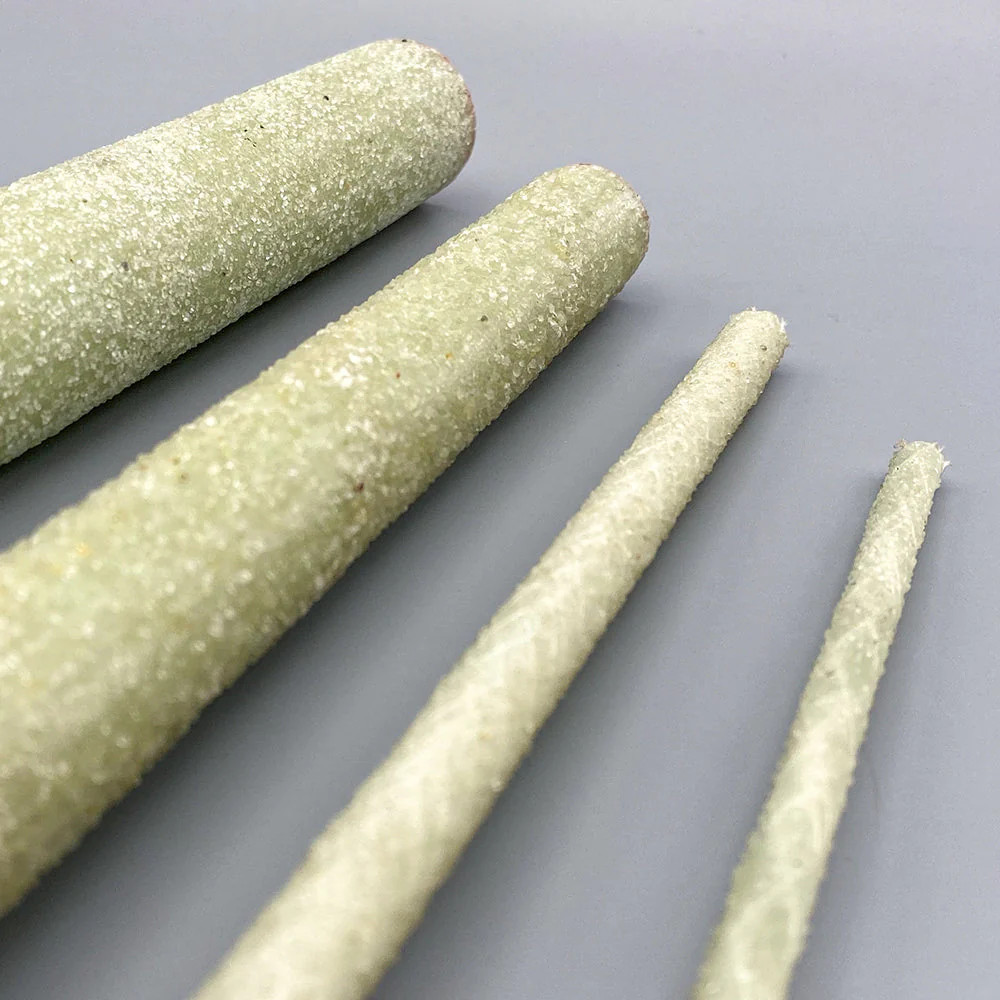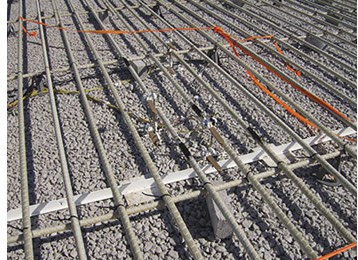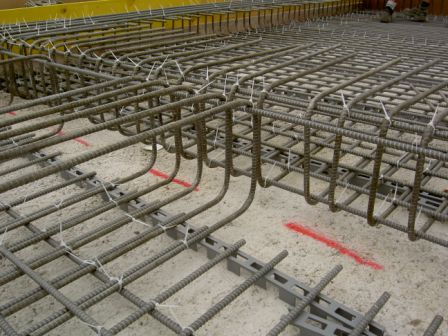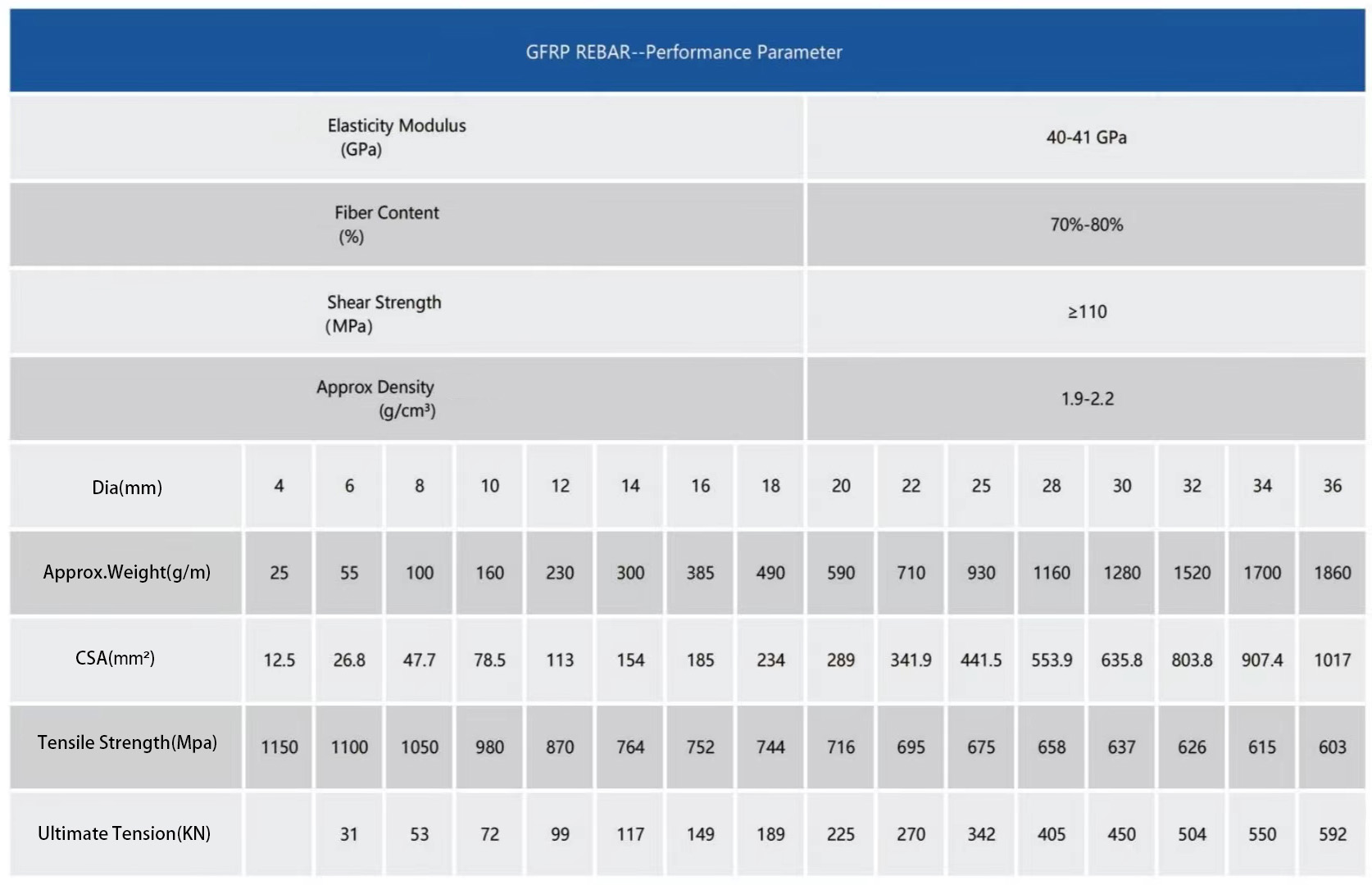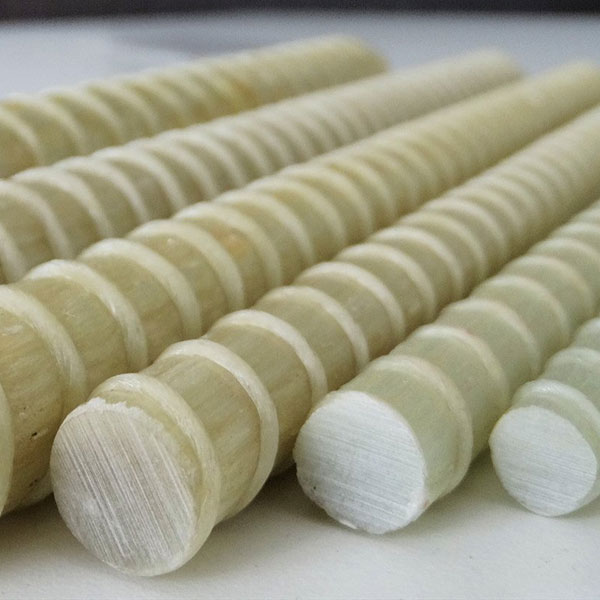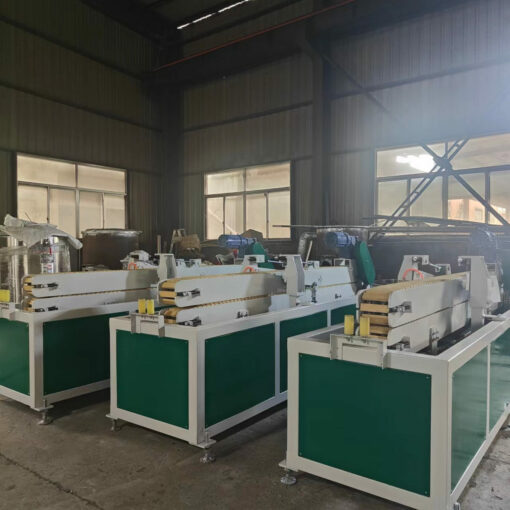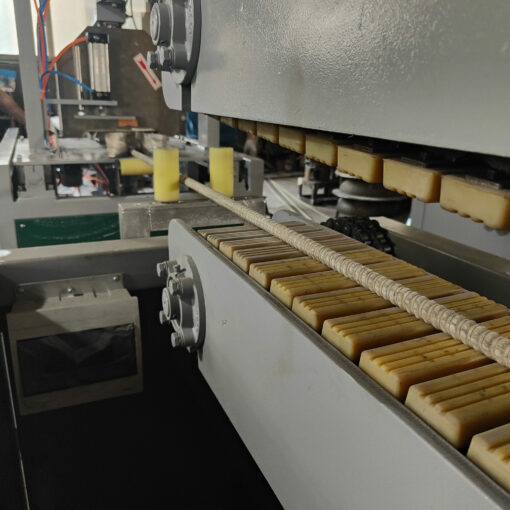Glass fiber reinforced (GFRP) rebar can replace steel rebars in concrete structures. The use can be temporary – or permanent where there is a requirement for high strength, risk of corrosion or to avoid or to avoid induction of currents from electromagnetic fields.
The product offers environment friendly solutions and provides significant reduction of repair and maintenance cost.
The glass fiber reinforced rebars are produced with pultrusion in a continuous process. Fibers used are high quality glass, resin from polyester or vinyl ester with a typical fiber content of 75%.
The GFRP rebars have two times strength (tensile strength) compared to steel. The rebar material exhibits linear-elastic behaviour up to failure – so-called brittle behaviour. The weight is a ¼ compared to steel rebars.
GFRP rebars are available in nominal diameters from 8 mm to 38 mm. Angles / bends are available in various designs such as 2D or 3D shapes, similar to that of steel rebar.
Product performance introduction
Advantages and Properties
-
low thermal conductivity reduces cold bridge through concrete
-
not electrically conductive – will not lead unwanted electrical current in case of accident
-
non-magnetic – does not interfere with electronic instruments
-
corrosion resistant – reduces the cover for corrosion protection
-
high tensile strength – approx. double the strength of steel bar
-
continuously profiled surface – proper bonding to the concrete
-
low weight – easy handling at site
1. Introduction
The traditional strengthened concrete members such as beams are composed of concrete included Portland cement and steel rebars reinforcement. The function of concrete in these beams is the resistance to compressive loads. The tensile and shear loads will be resisted by steel rebars embedded in the concrete. Such structure is efficient where the concrete inseparable resistance to compressive loads, while the steel enhances tensile and partially shear strengths. However, the problem of corrosion associated with the steel rebars reduced its live time and the solutions such as the coating of the steel rebars are costly. Recent technologies have resulted in alternative reinforcing materials such as GFRP materials commercially available in the form of bars or sheets that can be bonded in concrete members to fulfill several desired properties. The most important is that the corrosion resistance feature of the polymer and the elongated strain to failure that give enough time to alert before failure takes place
2. Aims of the work
Glass fiber reinforced polymer (GFRP) was used as an alternative material to the steel rebar. It is lightweight, no-corrosion, superior tensile strength, and high mechanical performance. Installation of the GFRP rebar is similar to steel rebar, but with less handling, transporting and storage problems. In this work, the unsaturated polyester resin and E-glass fibers are used to synthesis GFRP rebars of 1.25 cm diameter to simulate the dimensions of steel rebars. Their surfaces are modified by the inclusion of coarse sand to avoid slipping in stress conditions. Then, the mechanical characterizations of reinforced concrete with GFRP rebars are applied and compared with that of steel rebars.
3. GFRP rebar used
The Materials used in this research and their characteristics are: Glass fibers in the form of a mat “JIASHAN FIBERGLASS WEAVING FACTORY ZHEJIANG, China” Weighing 600 g∖m2 and a length of 1250 mm. The fibers are pulled from the mat and utilized to synthesis rebars. It is found that 86 fibers and the added resin are required to produce a rebar of 1.25 cm diameter. Unsaturated polyester resin “FARAPOL Company, Iran” and Hardener (Methyl ethyl ketone peroxide) “akpakimya company, Turkey”. Ordinary Portland cement manufactured by (Mass-Bazian) was used, conformed to the Iraqi standard. Al-Ukhaydir natural sand as fine aggregate and the gradation and selected chemical and physical properties were within limits of the Iraqi standard . Gravel of (5–19 mm) gradation was utilized as a coarse aggregate from north of Baghdad (Al-Nabaai) and the sieve analysis, specific gravity, density and sulfate contents are within Iraqi standard No.45/1984 . Tap water was used.
Synthesis of GFRP rebar from glass fibers and unsaturated polyester resin was produced by immersing the fibers longitudinally in the unsaturated polyester resin with (1%) of its hardener and then the excess polymer is removed. That was without the utilization of a mold, because in case of using a mold, the matrix will fail before fibers resistance when subjected to the forces of tension. Several efforts were made to fulfill the required diameter of bar by using different number of fibers and measuring diameter every time . Finally a bar of diameter 12.5 mm was obtained which is common in construction applications. The resulting bar has fibers volume fraction of 80% and polyester volume fraction of 20%.
After obtaining GFRP , tensile and bend strengths were measured and compared with normal reinforcement bar. There are many ways to increase bonding between reinforcement and the concrete such as coating of GFRP bars with coarse sand of above 300 μm .
The used mixing proportion was (1:1.5:3). The dry materials (cement and sand) were thoroughly mixed per ASTMC-192 in a pan and then the gravel was combined and mixed with the entire batch by shovel until the gravel is uniformly distributed throughout the batch. Then the water was poured and blended with the dry materials for specific duration until the concrete is homogenous in appearance and has the desired consistency. The mixing process was paused and then returned for a few minutes and the open end or top of the pan was covered to prevent evaporation during the rest period. This step was repeated in two cycles to insure the homogeneity for mixture. The total mixing time was about 15 min (see ).
Benefits of Fiberglass Reinforcing Bar:
- Corrosion Resistance: Will never rust, and is impervious to the action of salt ions, chemical, and the alkalinity inherit in concrete.
- Lightweight: Approximately one-quarter the weight of an equivalent size steel bar, offering significant savings in both placement and use.
- Electromagnetic Neutrality: contains no metal, and will never interfere with the operation of sensitive electronic devices such as medical MRI units or electronic testing devices.
- Thermal Insulator: Highly efficient in resisting heat transfer.
Fiberglass Rebar FRP Rebar
Series :
FRP Rebar And Rebar Machine >application
Exposed structures, Façade panels ,Refurbishment and strengthening ,Infrastructural buildings ,Motorways ,Highspeed tracks ,Precast concrete ,Tunnel segments ,Mining ,Dams ,Transformer stations ,Shaft rings ,Waterway engineering ,Temporary application (Soft Eye) ,Railways/ aprons using induction loops ,Research facilities ,Foundations ,Industrial Plants ,Balcony connections ,Pavements.
FAQ
Q :
How strong is it?
A :
Fiberglas™ Rebar tends to be about double that of steel in tension. However, it does have a lower modulus of elasticity which can drive different design requirements.
Q :
Can GERP rebar replace steel?
A :
Yes, Fiberglas™ Rebar absolutely can and is being used to replace steel in many structures of all shapes and sizes. However, this does not mean it can or should be used as a direct replacement. Oftentimes, depending on the demands, you may need a bit more or less Fiberglas™ Rebar. Typically, our designed are dictated by serviceability and crack widths.
Q :
How do I install GFRP rebar?
A :
Tying the Material: Fiberglas™ Rebar can be tied similar to steel bars, and a plastic-coated tie wire is most common. In applications where no metal is allowed, nylon zip ties are an option. Lap Splices: Lap splices are done in the same manner as steel and can be tied to steel as well. The length required may vary, so it is best to confirm the correct value prior to placement. Handling: Although it is a durable material, some care should be taken just as it should with any material. Handle as you would epoxy coated rebar and avoid dragging the material or physically damaging it. Cutting: Fiberglas™ Rebar is a very easy to cut material and can be cut with a variety of different saws. The recommendation would be to use a circular saw with a diamond tipped blade, but reciprocating saws with a blade for cutting metal will work for individual bars. Do NOT attempt to shear or torch the bar, as this will damage it and render it unusable.
Other related products

